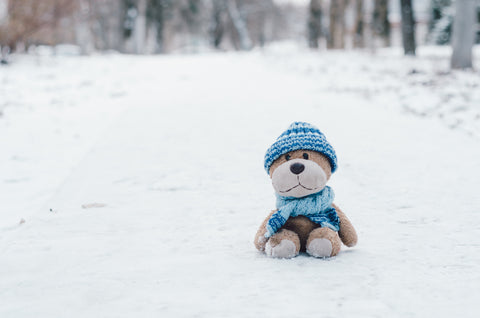The right toy can be a wonderful way to help develop your little one's functional, motor, cognitive and independent skills. Toys, playtime and games are great opportunities to introduce learning to your little one. 🧸🌟
While toys are a great asset to help with your little one's developmental skills, it's very important to also consider all aspects of your baby's safety when choosing the best toys for their age. You’re probably wondering “how do I know a toy is safe for my baby?”. We've got you covered!
In general, when buying your baby toys, it’s important to look for the following.
- CE and UKCA marks on any toy you buy. This means that the toy meets regulatory requirements.
- The voluntary BTHA lion mark. This stands for the British Toy and Hobby Association and ensures the toy meets statutory safety requirements.
- Avoid toys with long hair, loose ribbons and other hazards.
- ALWAYS check the age-grading before purchasing ANY toy.
So, keep these in mind, when you buy your baby toys. Here are some post-purchase toy safety tips.
1. 📏 Toy size is important.
Make sure that toys are not too small or too large for your child. Toys should be at least 1.25 inches in diameter and 2.25 inches in length - so your little one doesn’t accidentally swallow anything. This means avoiding toys like marbles, coins, tiny balls, and beads. These are way too small and pose a chewing hazard.
Lastly, when considering the size of your toy, do ensure that the toy won’t break off into little pieces.

2. 🤖 Check for sharp ends.
Your little one may put the toy near their mouth, eyes or ears (this is pretty much inevitable, really). So, ensure that any toys you buy don’t have sharp edges. Try to look for toys that are plush, or made of soft rubber plastic. We encourage any toy with rounded, dull edges.

3. 🧼 Make sure all your toys are washed and disinfected.
Washing, cleaning and disinfecting toys (you can also use sprays and wipes if the toy isn’t machine washable) is VERY important - especially during cold and flu season and ESPECIALLY with the new variant of COVID-19 spreading. Your child might be touching their toys with dirty hands, sharing their toys with other children (or caretakers) and maybe even dropping their toys on dirty, unsanitary surfaces. Keeping toys clean, on a regular basis, is now more essential than ever.

4. 🏷️ Look for labels.
Age labels are important, pre-purchase. But, consider other labels on your baby’s toys. Can it be washed? Are there any important safety measures you need to re-check? Some toys also have information on whether the toy is fragile, breakable or so forth. Please do take all labels into consideration - and read them thoroughly, before giving them to your little one to play with.

5. 👀 Supervise your child.
If you have the time, keep an eye on your child while they play. By supervising their play, you can help your child reach their developmental milestones, by encouraging certain behaviours during play. You can also ensure your little one stays safe with their toys.
This especially stands for your little one’s first few experiences with their toy. That way, if you see any issues or hazards crop up, you can correct them. If you’re noticing continuous hazards which keep popping up, the toy should be discarded or donated.

🥰 Toy safety tips? We have you covered!
Let’s ensure that your baby can enjoy themselves while YOU have the peace of mind you deserve. Let’s keep playtime a safe space - full of fun, enjoyable developmental milestones.
Interested in learning more about playtime, toys and your baby’s development? We’ve got you covered with our ‘best toys’ blogs (arranged by age!).
💡 Click here for our ‘best toys for babies, 0-6 months’ blog
💡 Click here for our ‘best toys for babies, 6-12 months’ blog
💡 Click here for our ‘best toys for toddlers’ blog

Our Customer Support Team are mums and dads!
Need some parenting support? Our customer support team of mums and dads have helped thousands of parents. We're here for you!


















